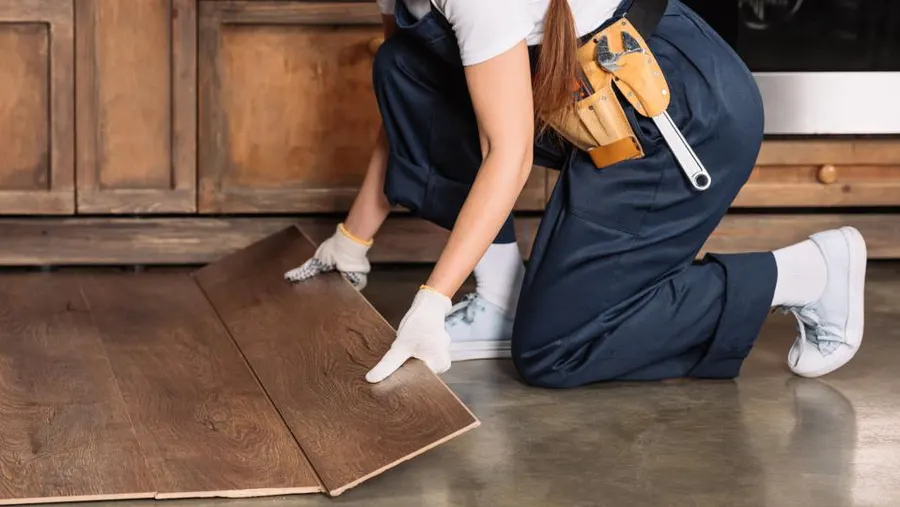Flooring Southlake TX adds elegance, sophistication, and timeless beauty to any home, making it a popular choice for homeowners seeking to create a luxurious and inviting atmosphere.

However, to preserve the natural beauty and durability of stone flooring, proper maintenance and cleaning are essential. In this comprehensive guide, we’ll explore the best practices for maintaining and cleaning natural stone flooring, ensuring that it remains pristine and lustrous for years to come.
1. Understand the Characteristics of Natural Stone
Before diving into maintenance and cleaning techniques, it’s essential to understand the characteristics of natural stone and how they influence care and maintenance. Natural stone comes in a variety of types, including marble, granite, travertine, limestone, slate, and sandstone, each with its unique properties and maintenance requirements.
- Porosity: Natural stone is porous, meaning it can absorb liquids and stains if not properly sealed.
- Durability: While natural stone is durable and long-lasting, it can be susceptible to scratching, etching, and chipping if exposed to harsh chemicals or abrasive materials.
- Variability: Natural stone exhibits natural variations in color, veining, and texture, adding to its beauty and uniqueness.
2. Implement Preventative Maintenance Practices
Preventative maintenance is key to preserving the appearance and integrity of natural stone flooring. By following these preventative measures, you can minimize wear and tear and prolong the lifespan of your stone flooring:
- Sealing: Properly seal your natural stone flooring to protect it from moisture penetration, stains, and damage. Sealants help create a protective barrier that repels liquids and prevents absorption into the stone.
- Use Coasters and Mats: Place coasters under glasses and mats or rugs in high-traffic areas to protect the stone surface from scratches, spills, and abrasive particles.
- Regular Sweeping or Vacuuming: Remove dust, dirt, and debris from the surface of the stone flooring regularly using a soft-bristle broom or vacuum cleaner with a brush attachment. This prevents abrasive particles from scratching the surface.
3. Clean Spills Promptly
Promptly clean up spills and stains to prevent them from penetrating the porous surface of the natural stone and causing permanent damage. Use a soft, absorbent cloth or paper towel to blot up spills immediately, taking care not to spread the liquid or rub it into the stone.
- pH-Neutral Cleaner: For routine cleaning of natural stone flooring, use a pH-neutral stone cleaner diluted with water. Avoid using acidic or abrasive cleaners, as they can etch the surface of the stone and dull its appearance.
- Gentle Scrubbing: For stubborn stains or dried spills, gently scrub the affected area with a soft brush or sponge dipped in the diluted stone cleaner solution. Avoid using abrasive scrubbing pads or harsh chemicals, as they can damage the stone.
4. Deep Clean Periodically
In addition to regular maintenance, deep clean your natural stone flooring periodically to remove embedded dirt, grime, and residues that can dull the surface and detract from its natural beauty. Follow these steps for a thorough deep cleaning:
- Remove Furniture: Clear the area of furniture and obstacles to access the entire surface of the stone flooring.
- Pre-Wet the Surface: Thoroughly wet the stone flooring with clean water to loosen dirt and debris and prepare it for cleaning.
- Use a Stone Cleaner: Apply a pH-neutral stone cleaner diluted with water to the surface of the stone flooring. Use a soft-bristle scrub brush or mop to agitate the cleaner and lift dirt and stains from the surface.
- Rinse Thoroughly: Rinse the stone flooring with clean water to remove any remaining cleaner and residues. Ensure that all traces of cleaner are thoroughly rinsed away to prevent streaking or film buildup.
5. Address Stains and Etching
Despite your best efforts, natural stone flooring may occasionally develop stains or etching from spills, acidic substances, or abrasive materials. Here’s how to address common issues:
- Stain Removal: For organic stains such as food, beverage, or pet stains, create a poultice using a mixture of baking soda and water or a commercial stone stain remover. Apply the poultice to the stain, cover it with plastic wrap, and allow it to dry completely before gently removing and rinsing.
- Etch Removal: If your stone flooring has developed etch marks from acidic substances, such as lemon juice or vinegar, use a marble polishing powder or limestone etch remover to restore the surface. Follow the manufacturer’s instructions carefully and buff the affected area with a soft cloth to restore shine.
6. Perform Regular Sealing
Regularly check the sealant on your natural stone flooring and reapply it as needed to maintain optimal protection against moisture, stains, and damage. The frequency of sealing depends on factors such as the type of stone, level of foot traffic, and exposure to moisture.
- Water Test: Perform a simple water test to determine if your stone flooring requires resealing. Sprinkle a few drops of water onto the surface of the stone and observe how it reacts. If the water beads up and does not absorb into the stone, the sealant is still effective. If the water absorbs into the stone and leaves a dark spot, it’s time to reseal.
7. Seek Professional Assistance if Needed
If you’re unsure how to properly maintain or clean your natural stone flooring or if you encounter stubborn stains, etching, or damage that requires professional attention, don’t hesitate to seek assistance from a reputable stone care professional or flooring specialist. They can assess the condition of your stone flooring, recommend appropriate cleaning products and techniques, and provide expert guidance on maintenance and care.
Conclusion:
Maintaining and cleaning natural stone flooring requires careful attention to detail, proper techniques, and the use of appropriate cleaning products and materials. By implementing preventative maintenance practices, promptly addressing spills and stains, deep cleaning periodically, and performing regular sealing, you can ensure that your natural stone flooring remains pristine, lustrous, and beautiful for years to come.
Floor N More
1621 E Southlake Blvd, Southlake, TX 76092, United States
1-817-310-6331


